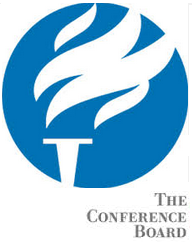Written by Doug Short and Steven Hansen
The Conference Board Consumer Confidence Index improved to 98.1 in January from the December final reading of 96.3, a small downward revision of December’s initial 96.5. The market expected (from Bloomberg) this index to come in between 91.0 to 99.2 (consensus 96.0).

Note that this data is considered preliminary, and the cutoff for these results was 14 January 2016.
Here is an excerpt from The Conference Board:
The Conference Board Consumer Confidence Index®, which had increased in December, improved moderately in January. The Index now stands at 98.1 (1985=100), up from 96.3 in December. The Present Situation Index was unchanged at 116.4, while the Expectations Index increased from 83.0 to 85.9 in January.
“Consumer confidence improved slightly in January, following an increase in December,” said Lynn Franco, Director of Economic Indicators at The Conference Board. “Consumers’ assessment of current conditions held steady, while their expectations for the next six months improved moderately. For now, consumers do not foresee the volatility in financial markets as having a negative impact on the economy.”
Consumers’ appraisal of current conditions was relatively flat in January. The percentage saying business conditions are “good” was virtually unchanged at 27.2 percent, while those saying business conditions are “bad” declined slightly from 18.9 percent to 18.5 percent. Consumers’ assessment of the labor market was modestly more positive. The proportion claiming jobs are “plentiful” decreased from 24.2 percent to 22.8 percent, while those claiming jobs are “hard to get” declined to 23.4 percent from 24.5 percent.
Consumers’ optimism about the short-term outlook improved somewhat in January. The percentage of consumers expecting business conditions to improve over the next six months rose from 14.5 percent to 16.2 percent, while those expecting business conditions to worsen edged down from 10.8 percent to 10.3 percent.
Consumers’ outlook for the labor market was also slightly more optimistic. Those anticipating more jobs in the months ahead increased from 12.4 percent to 13.2 percent, while those anticipating fewer jobs decreased slightly from 16.8 percent to 16.5 percent. The proportion of consumers expecting their incomes to increase improved from 16.3 percent to 18.1 percent. However, the proportion expecting a reduction in income increased from 9.5 percent to 10.8 percent.












Leave A Comment